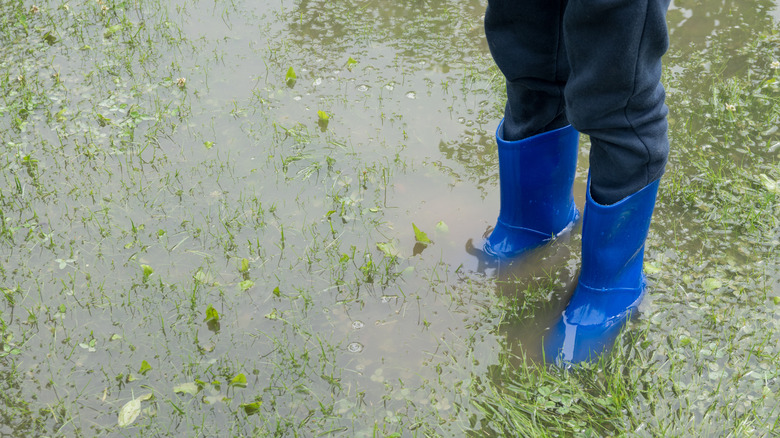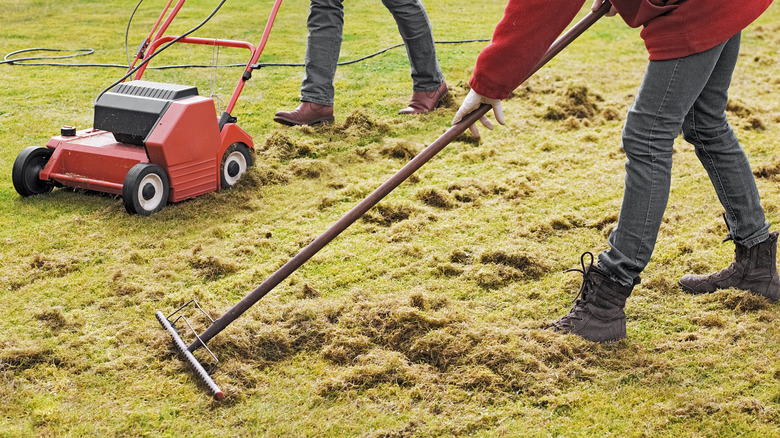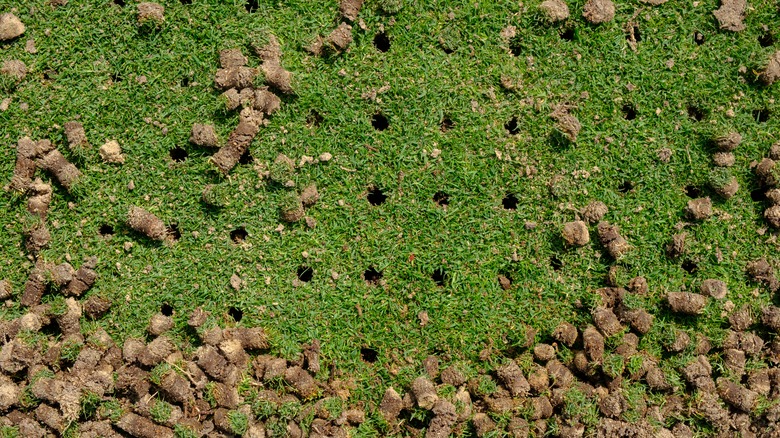The Simplest Way To Remove Standing Water From Your Lawn
Whether due to an immensely heavy rainfall, or buildup over time due to a sloping landscape, some yards can accumulate pooled water. Removing standing water from your lawn is important for a number of reasons. For one, excessive water can suffocate grass roots by displacing air pockets in the soil. If your grass or nearby plants cannot breathe, they will be unable to grow and thrive. This is one of the reasons why overwatering is a major mistake you need to avoid in your garden and why it is important to time your lawn watering wisely. In fact, during certain particularly rainy seasons, you may want to think twice before watering your lawn every day to prevent waterlogging. Moreover, excessive moisture over a prolonged period of time creates ideal conditions for fungal diseases and various types of rot, as well as the growth of algae and certain weeds. These can not only mar the appearance of your lawn but also detract from its overall health and vigor.
Beyond direct damage to your lawn, stagnant water is a breeding ground for bugs like mosquitoes. Not only do these pests pose a nuisance, but they can also carry potential health risks. Removing pooled water mitigates the proliferation of these insects and promotes a healthier outdoor environment for you and your family.
Depending on your lawn's soil health, irrigation system, and landscaping features, removing water buildup can be hard. Luckily, there is an easy way to remove standing water from your lawn.
Step 1: Dethatch
If your lawn has become home to a standing pool of water, enhancing water flow becomes imperative. The initial step in improving flow is to address thatch buildup in your grass. Thatch is a layer of dead grass, roots and other organic matter, like leaves, mulch, or compost, that accumulates on the soil surface over time. While a thin layer of thatch can benefit your lawn, it sometimes thickens excessively. When this happens, thatch can prevent water from seeping into the soil, leading to surface pooling. Dethatching involves removing this layer to allow water to penetrate the soil more easily.
There are many tools readily available to help you dethatch your lawn, including dethatching rakes or power rakes. Simply rake as you would normally rake dead leaves, picking up the thickened thatch and disposing of it responsibly. If you prefer not to go manual, you can use a dethatching machine, which loosens and removes the thatch without harming the underlying grass.
Step 2: Aerate
Now that you've tackled the layer of dead material that was blocking water flow from the surface, the next step is to aerate your lawn. Aeration is the process of creating small holes in your soil. This will further improve water, air, and nutrient penetration. By physically creating holes, you will also alleviate soil compaction, so that your lawn can thrive unimpeded.
For those of you who are daunted by the thought of crouching and physically poking in holes one at a time, fret not. There are aerators available in gardening supply stores. One choice is a spike aerator. These use solid tines to poke holes into the soil. However, for a more thorough approach, consider core aerators, which do the exact opposite. They remove plugs of soil from your lawn. Generally, it is agreed upon that core aeration is more effective at relieving soil compaction and improving drainage in the long term (via Lawn Love).


